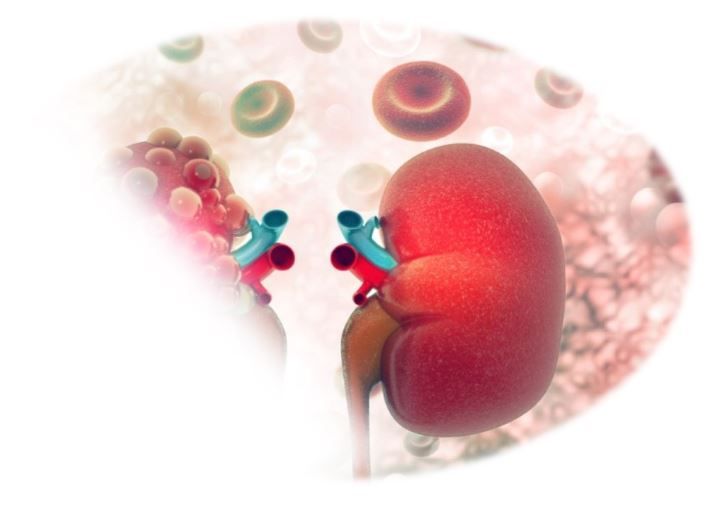- Clinical Technology
- Adult Immunization
- Hepatology
- Pediatric Immunization
- Screening
- Psychiatry
- Allergy
- Women's Health
- Cardiology
- Pediatrics
- Dermatology
- Endocrinology
- Pain Management
- Gastroenterology
- Infectious Disease
- Obesity Medicine
- Rheumatology
- Nephrology
- Neurology
- Pulmonology
ADPKD Quiz: Questions on Disease Progression
The risk for end-stage renal disease in patients with ADPKD is high. What factors increase the risk and how is it best managed? Test yourself.

Patients with autosomal dominant polycystic kidney disease (ADPKD) are at increased risk for end-stage renal disease (ESRD) some for more rapid progresion. Test your understanding of the risk factors for disease progression, the benefits of tight blood pressure control in ADPKD, and other key features of the condition.
Q1. Approximately what percentage of patients with autosomal dominant polycystic kidney disease (ADPKD) will progress to end stage renal disease (ESRD)?A. 20%
B. 40%
C. 55%
D. 70%
Please click here for answer and next question.
Answer: D. 70%. ADPKD is a common inherited kidney disease impacting more than 600,000 people in the United States and 12 million worldwide. About 70% of these patients will progress to ESRD, according to arecent review by Rastogi and colleagues. As a result, this disease is the fourth most common cause of ESRD.
Q2. Which of the following is/are risk factor/s for the rapid progression of ADPKD?
A. Female gender
B. PKD2 mutation
C. Early onset of hypertension
D. Native American or Asian American race
E. A and C
Please click here for answer and next question.
Answer: C. Early onset of hypertension. Early onset of hypertension is a risk factor for rapid progression of ADPKD, according to Rastogi and colleagues. Other risk factors include:
- age
- male gender
- PKD1 mutations (particularly truncating mutations)
- overweight or obesity
- early decreases in GFR
- high total kidney volume
- gross hematuria with early onset or repeating episodes
- women with hypertension who have had three more pregnancies
- presence of proteinuria, microalbuminuria, and serum copeptin elevations
Q3. Data from the US Consortium for Radiologic Imaging Studies in Polycystic Kidney Disease (CRISP) identifies which of the following as the typical first manifestation of ADPKD?A. Kidney enlargement
B. Kidney stones
C. Acute pain
D. Hematuria
E. Urine concentration defects
Please click here for answer and next question.
Answer: A. Kidney enlargement. The CRISP study has demonstrated that the first manifestation of this disease is kidney enlargement, according to a report by Kühn and colleagues. The CRISP findings indicate that total kidney volume increases are linked to both changes in GFR and increases in the volume of kidney cysts. In multivariable analysis, a baseline height adjusted total kidney volume ≥ 600 mL/M predicts the development of stage 3 chronic kidney disease in 8 years, validating this measure as a prior prognostic biomarker in the disease.
Q4. For an individual with an established PKD1 mutation who is 20-years-old, which of the following would meet criteria for ADPKD?
A. ≥3 unilateral or bilateral kidney cysts
B. ≥2 cysts in each kidney
C. ≥4 cysts in each kidney
D. 8 cysts total in both kidneys
Please click here for answer and next question.
Answer: A. ≥3 unilateral or bilateral kidney cysts. For individuals with a PKD1 or PKD2 mutation who are between the ages of 15 and 39 years, at least 3 unilateral or bilateral kidney cysts on ultrasound evaluation are sufficient for a diagnosis of ADPKD, according to unified diagnostic criteria published in the Journal of the American Society of Nephrology. For individuals 40 to 59 years of age, at least 2 cysts per kidney would indicate ADPKD, while in those aged ≥60-years-of-age and older at least 4 cysts in each kidney would meet the criteria.
Q5. In the HALT-PKD study, rigorous blood pressure control in ADPKD patients was associated with all of the following end points EXCEPT:
A. Lower increase in total kidney volume
B. Greater increase in the estimated glomerular filtration rate (eGFR)
C. Greater decline in the left-ventricular-mass index
D. Greater reduction in urinary albumin excretion
Please click here for answer and next question.
Answer: B. Greater increase in the estimated glomerular filtration rate. In patients with ADPKD, hypertension is linked to progression to ESRD and to death from cardiovascular disease. The randomized, double-blind, placebo-controlled HALT-PKD study compared a standard blood-pressure target (120-130/70-80 mm Hg) versus more aggressive blood pressure targets (95-110/60-75 mm Hg) in patients with ADPKD and an eGFR >60 mL/min/1.73 m2 of body surface area.
When compared to standard blood-pressure control, more intensive blood-pressure control resulted in a slower increase in total kidney volume, the primary end point of the study, along with greater reductions in left-ventricular-mass index and urinary albumin excretion. There was no change in eGFR overall, though investigators writing in the New England Journal of Medicine, said the study wasn’t large enough or long enough to properly evaluate the effect of rigorous blood pressure control on kidney function.
Q6. The HALT-PKD study also compared the effects of lisinopril plus telmisartan vs lisinopril plus placebo on changes in total kidney volume over time. The study showed which of the following regarding total kidney volume?
A. Slower increase with lisinopril plus placebo
B. Slower increase with lisinopril plus telmisartan
C. Decrease with lisinopril plus placebo
D. Decrease with lisinopril plus telmisartan
E. No difference between arms
Please click here for answer.
Answer: E. No difference between arms. The renin–angiotensin–aldosterone system (RAAS) appears to have a central role in the development of hypertension in patients with ADPKD, so HALT-PKD investigators hypothesized that increased use of RAAS inhibitors might delay progression. However, there was no impact on the rate of total kidney volume growth with dual RAAS blockade including lisinopril, an ACE inhibitor, and telmisartan, an ARB. Likewise, the rate of estimated GFR change was similar in the two medication groups.
